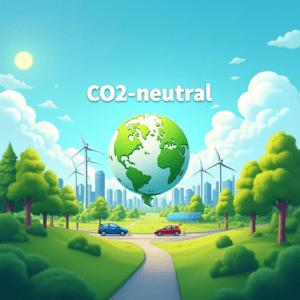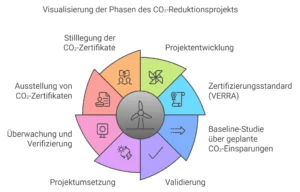The greenhouse effect describes the phenomenon in which the Earth’s atmosphere traps heat, creating a climate that is conducive to life. Without this effect, the average temperature on Earth would be about -18°C, instead of the current 15°C. The natural greenhouse effect is therefore essential for life on Earth as it keeps the heat from the sun in the atmosphere, reducing extreme temperature fluctuations.
The greenhouse effect is caused by greenhouse gases in the atmosphere, such as carbon dioxide (CO₂), methane (CH₄), nitrous oxide (N₂O), and water vapor. These gases allow sunlight to pass through to the Earth’s surface, where it is absorbed and converted into infrared radiation. The infrared radiation is then emitted back towards space by the Earth’s surface, but it is partially absorbed by the greenhouse gases in the atmosphere and re-radiated back to the Earth’s surface. This results in the heat remaining in the atmosphere for a longer time, contributing to global warming.
The anthropogenic (human-caused) greenhouse effect amplifies this natural effect through the additional release of greenhouse gases, primarily from the burning of fossil fuels, deforestation, and industrial agriculture. Since the beginning of industrialization, the concentration of these gases has significantly increased, leading to a rise in temperatures and, consequently, climate change. This additional greenhouse effect exacerbates global warming and affects weather extremes, sea level rise, and ecological systems worldwide.
For a more detailed explanation and scientific details, you can find information on Wikipedia on the Greenhouse Effect.



